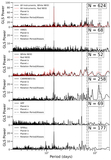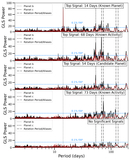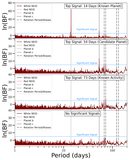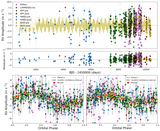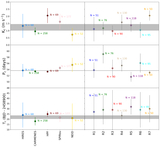Image Details
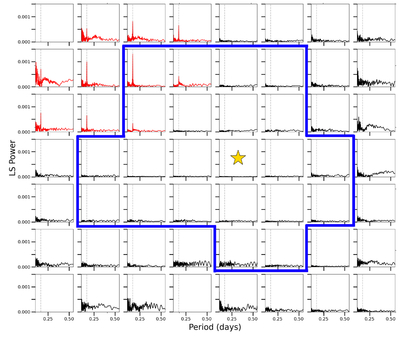
Caption: Figure 11.
Pixel-by-pixel periodogram of the TESS photometry of GJ 251 during TESS Sector 20. Each plot corresponds to a pixel of the TESS CCD, and the solid blue line is the aperture used by the PDCSAP pipeline during the generation of the GJ 251 light curve. A gold star highlights the pixel that contains GJ 251. This plot can help us discover the source of the periodic variability seen in the GJ 251 light curve. It is clear that the ∼4 hr periodicity originates not from GJ 251 but from other, neighboring pixels, which we highlight in red. Consequently, we can rule out the signal as fast rotation of GJ 251.
Copyright and Terms & Conditions
© 2025. The Author(s). Published by the American Astronomical Society.



